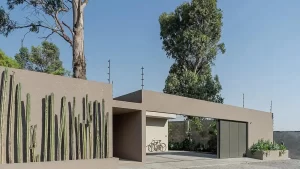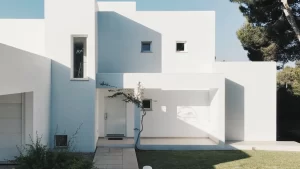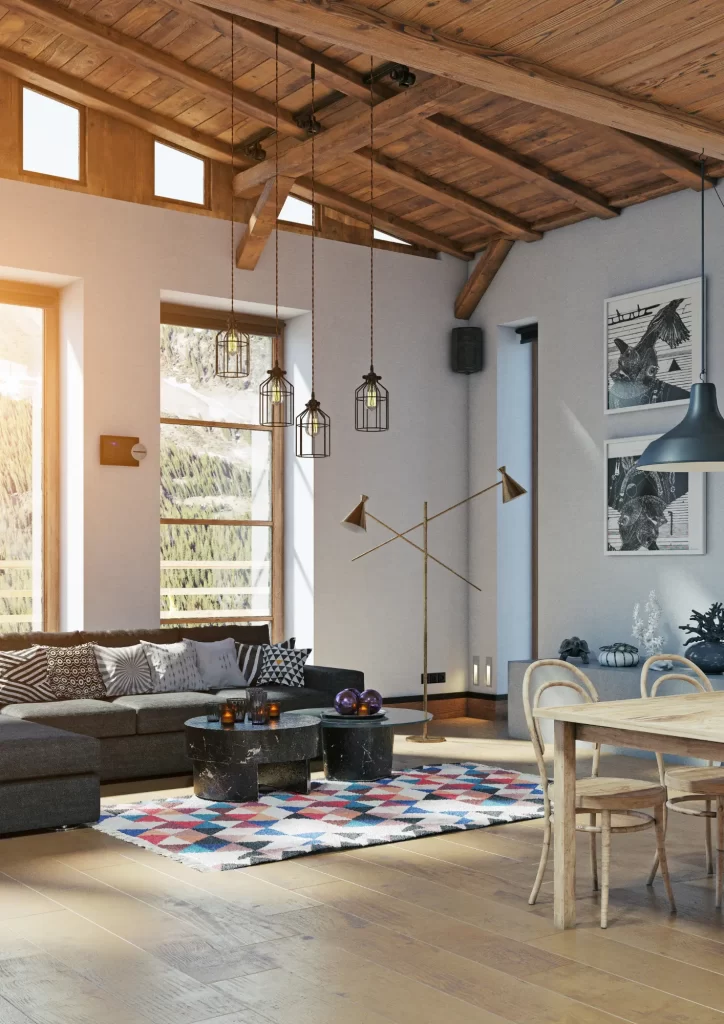Welcome to our comprehensive guide on creating a functional and stylish kitchen design. Whether you’re a passionate home cook, a busy parent, or someone who simply loves spending time in the heart of the home, designing your dream kitchen is an exciting and rewarding endeavor. In this post, we will provide you with a step-by-step guide that covers all the important aspects of kitchen design, from the essential parts to consider, to the process of planning and implementation. We will also share valuable tips on managing costs and timelines, ensuring that your kitchen design project stays on track. So, grab a cup of coffee and let’s embark on a journey of creating a kitchen that not only looks beautiful but also works seamlessly to meet your needs and elevate your daily life. Get ready to turn your kitchen into a functional and stylish space that you’ll truly love!
Understanding the Essential Parts of a Kitchen:
Designing a functional and stylish kitchen begins with a solid understanding of its essential parts. By considering each element carefully, you can create a space that not only looks beautiful but also works efficiently. Let’s explore the key components to take into account when designing your kitchen:
- Layout and Space Planning: The layout of your kitchen determines how efficiently you can move around and perform tasks. Consider different kitchen layouts such as U-shaped, L-shaped, or galley, and evaluate which one best suits your space and needs. Think about the work triangle, which involves positioning the sink, stove, and refrigerator in a way that allows for easy movement and accessibility.
- Cabinets and Storage: Cabinets play a crucial role in providing storage and organization solutions in your kitchen. Consider the style, material, and finish of your cabinets to ensure they align with your design aesthetic. Optimize storage space by incorporating features like pull-out drawers, adjustable shelves, and specialized organizers for pots, pans, and utensils.
- Countertops and Surfaces: Selecting the right countertops and surfaces is not only about aesthetics but also functionality and durability. Explore different materials such as granite, quartz, or solid surfaces, and consider factors like maintenance requirements, stain resistance, and heat resistance. Choose a countertop material that suits your cooking habits and enhances the overall design of your kitchen.
- Appliances and Fixtures: Choosing the right appliances and fixtures is essential for a well-designed kitchen. Consider your cooking style and preferences when selecting a stove, oven, refrigerator, and dishwasher. Pay attention to energy efficiency ratings to reduce utility costs. Additionally, select fixtures like sinks, faucets, and lighting that not only complement the design but also offer practicality and ease of use.
By understanding the essential parts of a kitchen, you can make informed decisions and create a space that combines functionality, style, and efficiency. In the next section, we will walk you through a step-by-step process to guide you in designing your dream kitchen.

Step 1: Assessing Needs and Setting Goals:
Before diving into the design process, it’s important to assess your needs and set clear goals for your kitchen design. Consider the following:
- Identify your requirements: Determine how you use your kitchen and what features are essential to your daily routines. Consider factors such as cooking habits, entertaining needs, and storage requirements.
- Lifestyle and priorities: Take into account your lifestyle and the functionality you desire. For example, if you enjoy hosting dinner parties, you may prioritize a spacious kitchen island or a designated area for guests to gather.
- Overall style and ambiance: Think about the style and atmosphere you want to create in your kitchen. Whether you prefer a sleek and modern look or a cozy and traditional feel, defining your desired style will guide your design decisions.
Step 2: Planning and Layout:
Once you have a clear understanding of your needs and goals, it’s time to plan the layout of your kitchen. Follow these steps:
- Measure your kitchen space: Take accurate measurements of the available space, including walls, windows, and doors. This will serve as the foundation for your scaled floor plan.
- Create a scaled floor plan: Using graph paper or specialized software, create a scaled representation of your kitchen space. Include measurements and accurately place openings, such as windows and doors.
- Determine key element placement: Consider the work triangle concept, which involves positioning the sink, stove, and refrigerator in a triangular formation. This layout ensures efficient movement while cooking. Additionally, plan the placement of cabinets, countertops, and other appliances according to your workflow and accessibility preferences.
By assessing your needs and setting goals, as well as planning the layout of your kitchen, you establish a strong foundation for a well-designed and functional space. In the next steps, we will delve into selecting materials and finishes, as well as managing costs and timelines for your kitchen design project.

Step 3: Selecting Materials and Finishes:
Once you have a solid plan in place, it’s time to select the materials and finishes that will bring your kitchen design to life. Consider the following:
- Explore materials and finishes: Research different options for countertops, cabinets, flooring, backsplashes, and hardware. Consider factors such as durability, maintenance requirements, and visual appeal. Look for materials that suit your style preferences while also aligning with your budget.
- Durability and maintenance: Assess the practicality of each material in terms of its ability to withstand everyday wear and tear. Consider factors like stain resistance, scratch resistance, and ease of cleaning. Choose materials that are not only aesthetically pleasing but also practical for your lifestyle.
- Visual appeal: Consider how each material and finish contributes to the overall aesthetic of your kitchen. Look for cohesive combinations that enhance your desired style and create a visually pleasing space. Pay attention to color schemes, textures, and patterns that complement each other.

Step 4: Managing Costs and Timelines:
Managing costs and timelines is crucial to ensure a smooth and successful kitchen design project. Consider the following tips:
- Set a realistic budget: Determine how much you are willing to spend on your kitchen design project. Allocate funds based on your priorities and make sure to leave room for unexpected expenses.
- Obtain multiple quotes: Seek quotes from different contractors and suppliers to compare prices and services. This will help you find competitive pricing and ensure you are getting the best value for your investment.
- Plan for potential delays: Understand that unforeseen circumstances or changes in design may cause delays in the project timeline. Allow for flexibility and buffer time to accommodate any unexpected challenges that may arise.
By carefully selecting materials and finishes and managing costs and timelines effectively, you can create a kitchen that not only meets your design goals but also stays within your budget and timeframe. In the next section, we will provide additional tips and insights to help you make the most of your kitchen design project.

Tips for Managing Costs and Timelines:
Managing costs and timelines is crucial for a successful kitchen design project. Here are some valuable tips to help you stay on track:
- Research and compare prices: Take the time to research and compare prices for materials, appliances, and other elements of your kitchen design. Look for deals, discounts, and sales to find the best value for your money. Don’t forget to consider quality and durability alongside the price.
- Mix high-end and budget-friendly elements: Achieve a balance between high-end and budget-friendly elements in your kitchen design. Splurge on focal points or areas that are most important to you, such as a statement light fixture or high-quality countertops, while opting for more affordable options in other areas. This allows you to achieve an overall stylish look without breaking the bank.
- Communicate openly with contractors and suppliers: Effective communication with your contractors and suppliers is key to avoiding misunderstandings and ensuring the project stays on schedule. Clearly communicate your expectations, budget constraints, and design preferences. Regularly check in with them to address any concerns or questions that may arise.
- Stay organized with a project timeline: Create a detailed project timeline that outlines key milestones, deadlines, and important tasks. Break down the project into smaller manageable steps and assign realistic timelines to each. Regularly review the progress against the timeline to ensure everything is on track. Make adjustments as needed and be prepared for unexpected delays.
By implementing these tips, you can effectively manage costs and timelines, keeping your kitchen design project within budget and ensuring it progresses smoothly. Remember to stay proactive, adaptable, and open in your communication throughout the process. With careful planning and management, you’ll be well on your way to creating the kitchen of your dreams.

Designing a functional and stylish kitchen is an exciting and rewarding journey that requires careful planning, consideration, and effective management. By understanding the essential parts of a kitchen, following a step-by-step process, and implementing cost and timeline management strategies, you can create a kitchen that meets your needs and reflects your personal style. Remember to assess your needs, plan the layout, select materials wisely, and communicate openly with professionals involved in the project. By staying organized and tracking progress regularly, you can ensure a successful outcome. So, roll up your sleeves, get creative, and transform your kitchen into a space that combines beauty, functionality, and efficiency. Happy designing!




